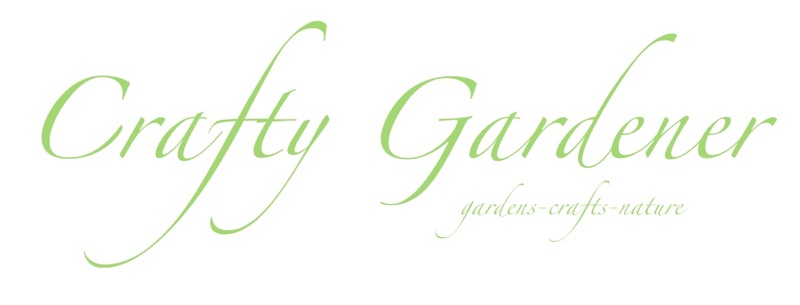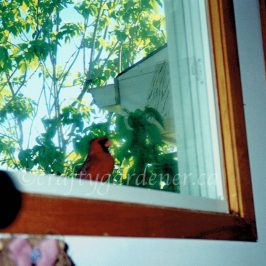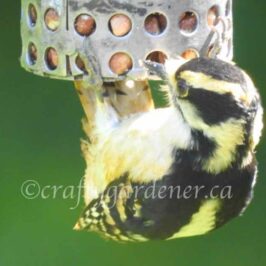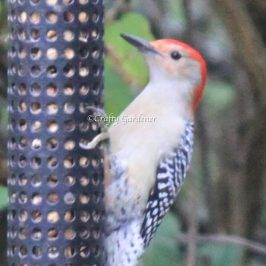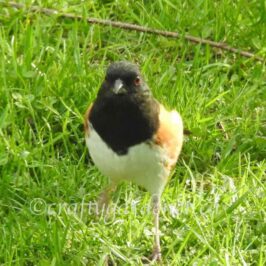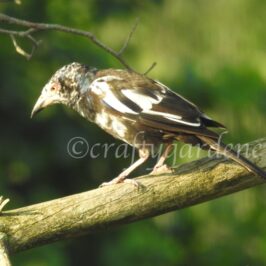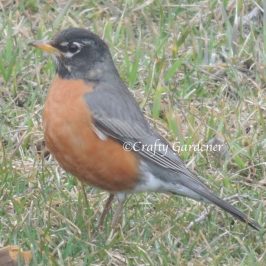The house wrens love the garden and each year take over some of the birdhouses and fill them with their nests. There is actually a birdhouse with the perfect size whole for the wrens but they also love the other houses.
There is lots of ‘wren’tal accommodation in the garden and the ‘wren’t is free.
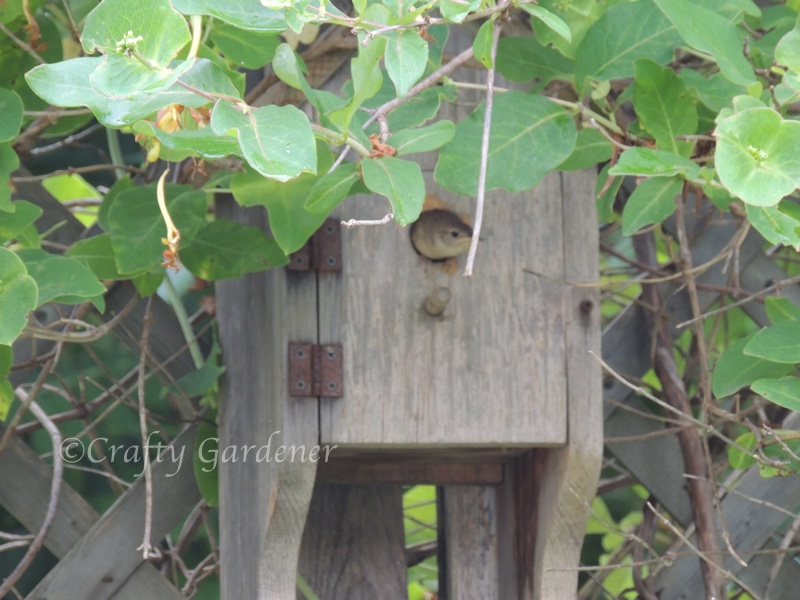
The wren house is in the trellis garden tucked among the honeysuckle vine. This area gets a fair bit of sunshine but the house is well shaded.
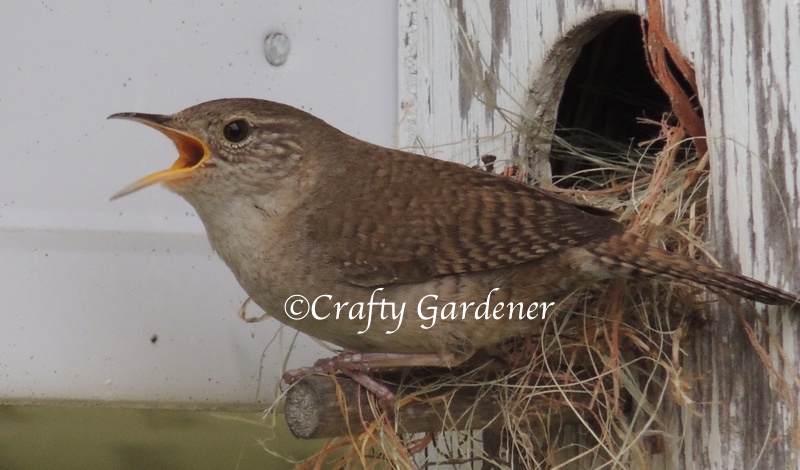
Here is the wren nesting in a house that the sparrows usually use under the eaves of the house.
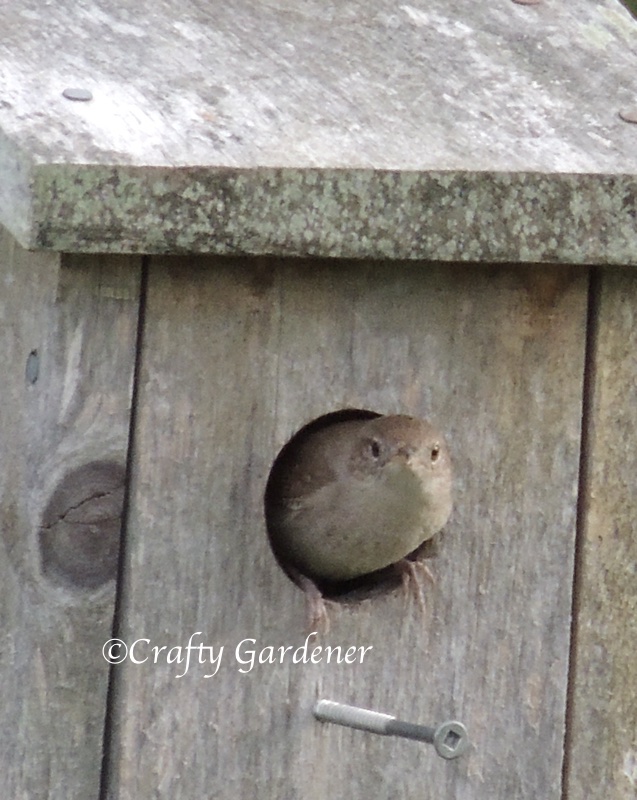
And here is the wren checking out one of the bluebird houses. They will also nest in tree holes and nesting boxes.
The male builds the nests, mostly made from soft twigs, … a few at a time. Then he takes his mate around to check them out and she picks the one she prefers.

The adult is about 13 cm long with a similar wingspan. They have a long, slightly curved beak and a little tail that sticks up. It darts quickly among the branches. Wrens are energetic and cheery, just like their song. They feed mostly on insects and a few spiders. They lay between 5-8 eggs perhaps twice a year. The young will leave the next up to 18 days after hatching.
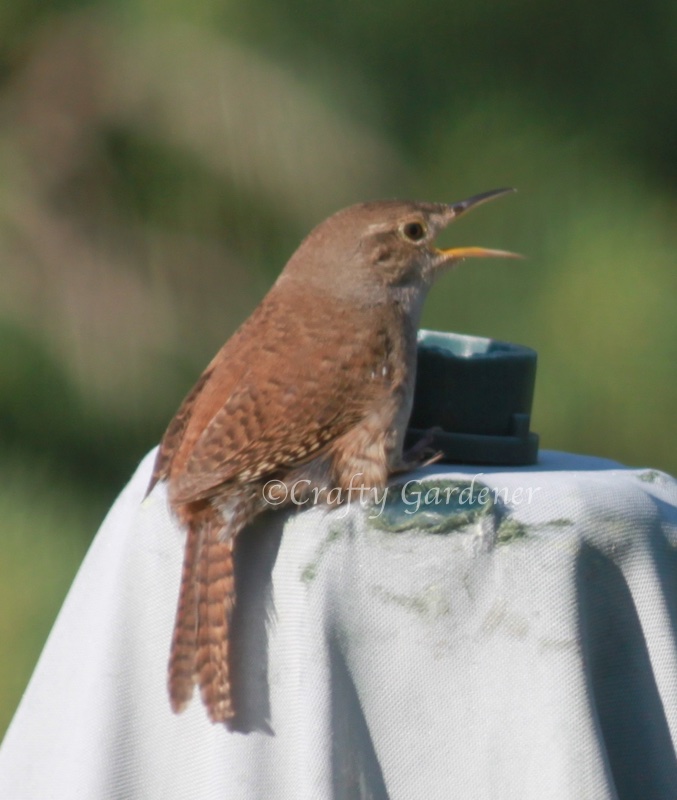
For such a small bird they have a mighty song.
It’s time for ABC Wednesday and the letter of the week is W. W for wrens.
I’m sharing with Wild Bird Wednesday, I’d Rather B Birdin’ and Saturday’s Critters.
![]()
lots more lens friends
